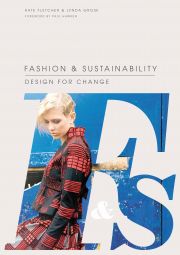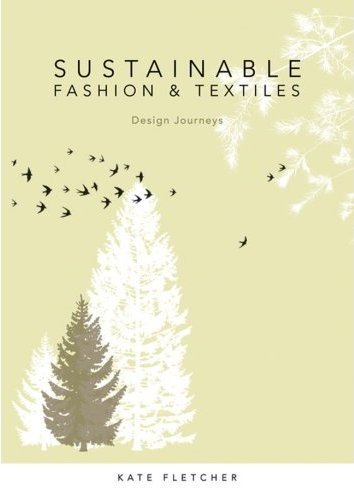The 5 principles of good design: Invisible, solves problems, open to communication, in sync with life cycle, and mimics nature.
“100 Ways to Save the World” is an entertaining, beautifully illustrated book with 100 super-simple tips that will make a difference to the planet.
Cradle to Cradle is a design methodology that puts a 'waste-less' world at its heart. What is the concept all about? What does it mean for the apparel industry? And who practises it among designers and companies?
'Fashion & Sustainability: Design for Change' is a worthy successor to Kate Fletcher's first book. Not only does it document the state-of-the-art as we encounter it in the present, but for the first time designers have both: a hands on manual of how they can hands-on change their practise, and what new concepts and technologies will be at their disposal in the near to mid-term future.
'Amelia's Compendium of Fashion Illustration' tackles 2 topic at once: Ethical fashion and its designers, and the promotion of fashion illustration as a discipline.
Within the EU, legislative requirements have lead to implementation of Extended Producer Responsibility schemes (EPRs) in the following industries so far: packaging, electrical and electronic equipment, batteries and automotive industries.
In this article, we would like to look sidewise, and see what can be learned from the electronic and electrical equipment industry, as they have been ahead of the curve – although not always voluntarily, since the 1995 laws came into place – when it comes to the implementation of EPR.
Story telling is a powerful tool, and an important part of how we create lasting memories. Can we use the power of story telling to encourage a different type of fashion consumption?
One of the challenges of sustainable fashion is the wording used to define it. We commonly associate adjectives like “sustainable”, “green”, “eco”, “responsible”, “conscious”, “ethical” with the word “fashion”. The question is: are certain words more popular than others? Or are some others nowadays outdated? How do consumer talk about sustainable fashion? And the industry?
"Sustainable Fashion & Textiles" makes it - beautifully - clear why the fashion industry, from the field to the consumer, needs change. And why design is key.
"Eco Fashion" introduces us to 62 fashion brands from all over the world, that happen to be 'eco'. The pictures show the work of true master designers.
The Higg Index is an apparel and footwear industry self-assessment standard for assessing environmental and social sustainability throughout the supply chain.
The Higg Index 1.0 was released on June 26, 2012.
Is Japan ready for ethical fashion?
We suffer from a strictly hierarchical fashion industry. Insights from a conversation with a top leaders for ethical lifestyle in Japan.
London Fashion Week 02/2011 - Day 4: Ethical fashion and the luxury sector. The high-end segment is awakening to its responsibilities. Or does it really?
Fall 2010, day 3: London Fashion Week, the dream destination of fashionistas. The origins of EstEthica, and the subjectively coolest designers in 09/2010.
Fall 2010, day 4: London Fashion Week, the dream destination of fashionistas. Quietly sustainable brands that don't shout about their commitment.
This article has originally been published online by ‘Japan for Sustainability’ (JFS) on May 30, 2005. It is the 1st...
Shirahime has been pronounced the winner of the Observer Ethical Award in the category 'ethical blog'. Time to look back, and to publicly renew this blog's commitment.
Ethical fashion, finally!. In addition to the fashion category, even in 4 of the 11 remaining general Observer Ethical Awards categories ethical fashion made it onto the short list.
Fall 2010, Conclusion: Paris Ethical Fashion Week, the longest standing ethical fashion event. What is the make-up of a successful ethical brand?
Yesterday: Paris Ethical Fashion Show September 2010: D3 – The colours of technology Tomorrow: Paris Ethical Fashion Show September 2010:...





